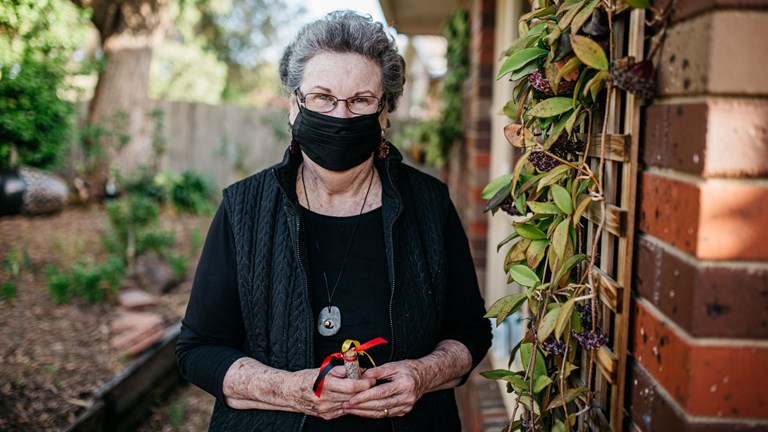
Aunty Jennine’s Gift Giving
Proud Willum Warrain Elder and Yaran woman Aunty Jennine Armistead brightened the day of people in her neighbourhood by offering plant cuttings and handwoven baskets to passers-by on her street.
One Year On – Stories of COVID-19 in Melbourne's Suburbs is a digital display that brings together a snapshot of stories collected across the suburbs of Melbourne in the first year of the COVID-19 pandemic.
From challenges and hardships through to examples of neighbourly kindness, hope and resilience, this selection of stories speaks to a wide range of themes including: volunteerism, community life, the emergence of new traditions, adaptations to education and work, isolation, creative and artistic responses to the pandemic and First Peoples healthcare and knowledge systems.

Proud Willum Warrain Elder and Yaran woman Aunty Jennine Armistead brightened the day of people in her neighbourhood by offering plant cuttings and handwoven baskets to passers-by on her street.
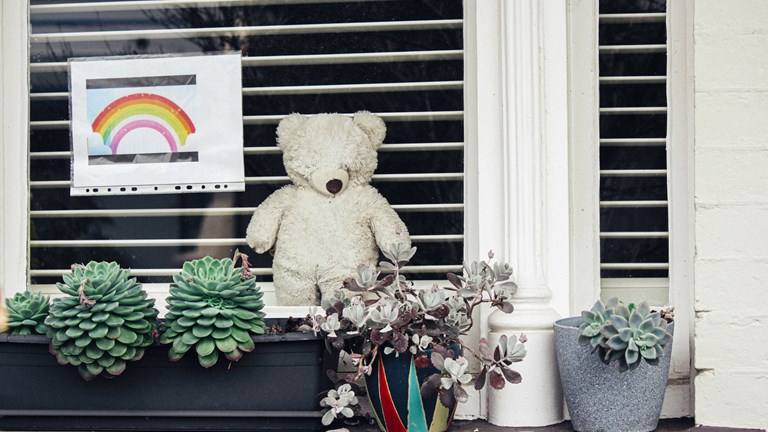
As the State of Victoria went into its’ first COVID-19 lockdown in March 2020, teddy bears and soft toys began to appear in household windows to entertain children and lift community spirits.
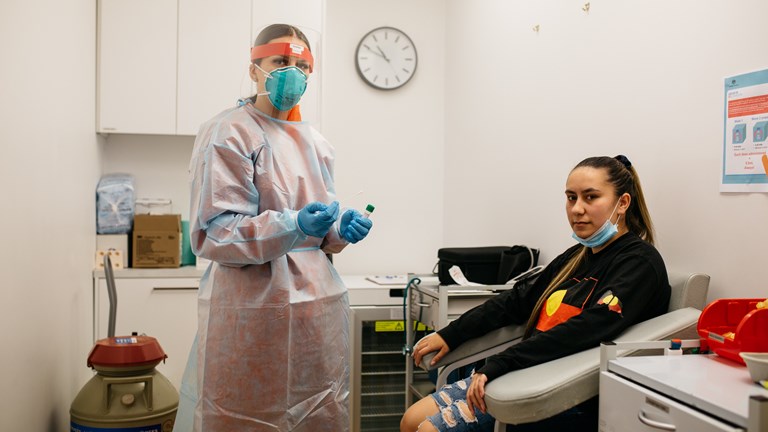
First Peoples' Health and Wellbeing (FPHW) is an Aboriginal community-controlled health service providing culturally safe healthcare to Aboriginal and Torres Strait Islander people during the pandemic, as well as offering COVID-19 testing via its' respiratory clinic in Thomastown. We speak to three staff members.
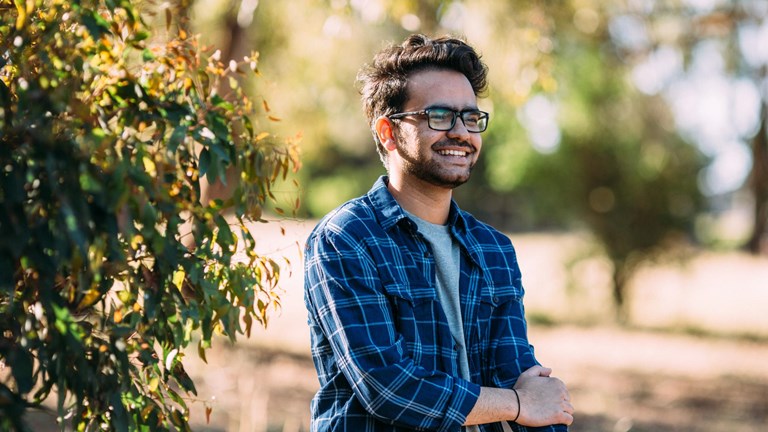
In 2019, four years after experiencing the Gorkha earthquake in Nepal, Pranaya Lohani moved to Melbourne to pursue postgraduate studies in social work. The very last thing he could have anticipated whilst studying abroad was a global pandemic.
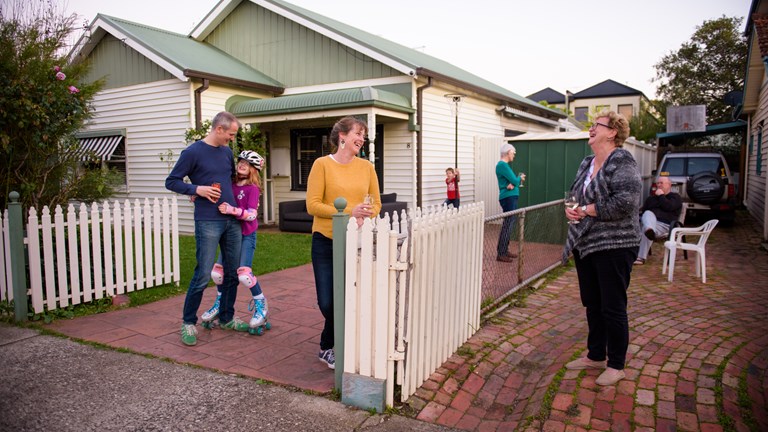
Across the Fence is a photographic series that was created by Melbourne-based photographer Julie Ewing as a ‘community-spirited goodwill project’ in response to the first COVID-19 lockdowns in Victoria that began in March 2020.
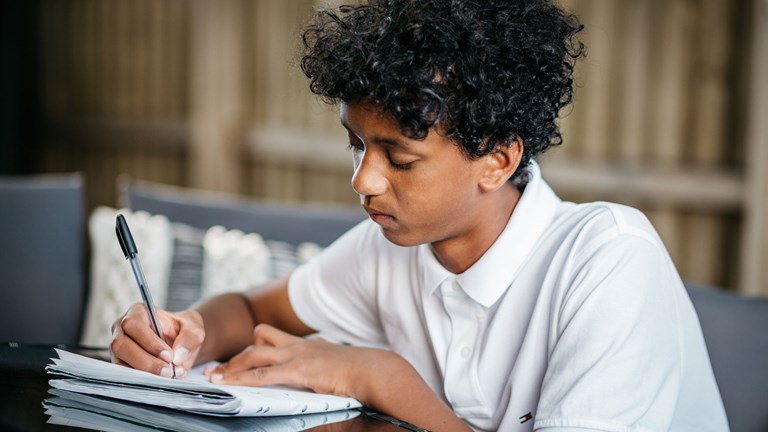
Inspired by the theory that it takes 66 days to form a new habit, 13-year-old Kofi Aden decided to keep a Gratitude Journal during lockdown and share it with the general public to motivate others.
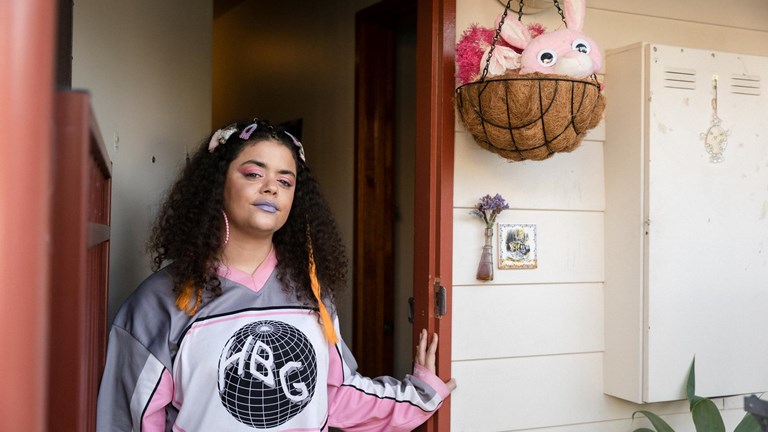
Bri Hammond’s photographic series uncovers stories and experiences of residents living in the Collingwood and Richmond public housing estates during COVID-19.

Four creative responses that represent examples of the important role that art and creative writing played during the COVID-19 pandemic.
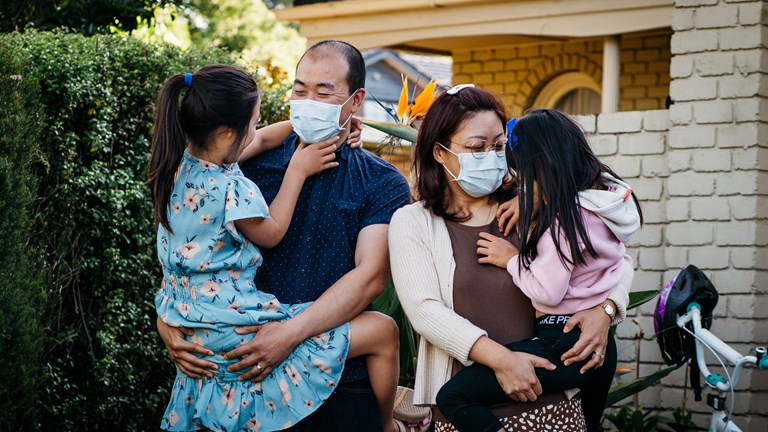
In January 2020, when Zheng and Grace Li took their daughters Elizabeth and Esther to China for the very first time to meet their grandparents and celebrate Chinese New Year, they couldn’t have imagined they would suddenly find themselves at the epicentre of an emerging pandemic.
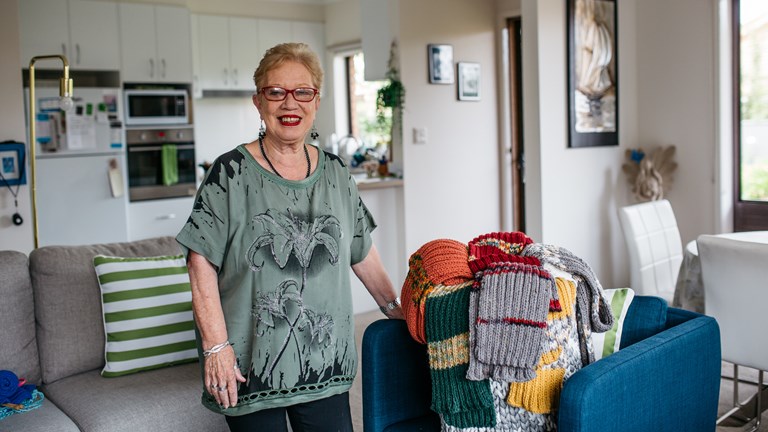
The Knit One Warm One Project invited knitters across the Maroondah community in eastern Melbourne – from school aged children to knitters living in aged care settings – to knit warm items such as scarves, beanies and rugs for community members who were sleeping rough or struggling financially.
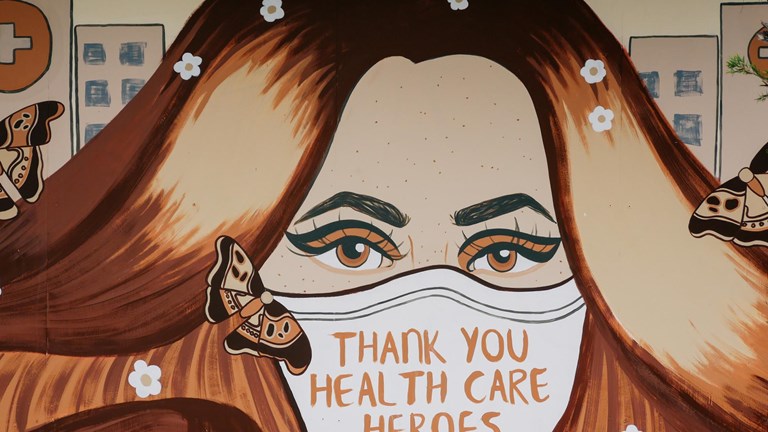
In late April 2020, a hand-painted wall mural emerged on the streets of Caulfield North, Melbourne, paying homage to healthcare workers and thanking them for their service during COVID-19.
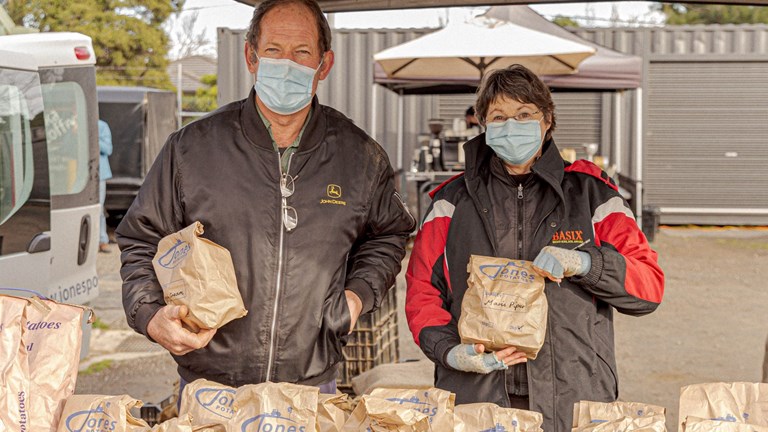
During the COVID-19 pandemic the Melbourne Farmers Markets (MFM) have proved to be an essential service, providing fresh produce to city dwellers whilst simultaneously supporting farmers – and communities in need – through challenging times.
One Year On – Stories of COVID-19 in Melbourne is a partnership between Museums Victoria and the Office for Suburban Development that was established in July 2020 with an aim to collect and document how individuals and neighbourhoods have adapted to life with the coronavirus (COVID-19) pandemic.
In late 2020-early 2021, Melburnians were invited to submit their stories to the Office for Suburban Development (via Engage Victoria), and subsequently a selection of these stories was curated and collected by staff at Museums Victoria. All the stories presented on this digital display have been acquired into Museums Victoria’s State Collection via the museum’s Collecting the Curve: COVID-19 Pandemic Collection.
We would like to thank the individuals and community members who shared their stories and experiences with us. Special thanks to: Myra Holmes, Julie Ewing (and all those featured in Across the Fence), Kofi and Abdi Aden, Angela Davies, Aunty Jennine Armistead, Uncle Peter Aldenhoven, Anne Benton, the Willum Warrain Aboriginal Association, Taneisha Webster, Pranaya Lohani, the Li Family, Di Pullin, Fiona Burridge, Jacinta Fox, Justine Millsom, Mark Aidone, Bri Hammond (and all those featured in her Public Housing Isolation Series), Lydia Dobbin, Stephen Duff, Marina Maggs, Liz McGrath, Nicole Kemp, Louise Hopewell, Stevie-Lee Ryan (Taungurung), Karinda Taylor (Wamba Wamba), Shania Shanahan (Arabana) and First Peoples' Health and Wellbeing.
Museums Victoria and the Office for Suburban Development acknowledge the Woi Wurrung (Wurundjeri) and Boon Wurrung peoples of the eastern Kulin Nations where these stories were collected, and First Peoples language groups and communities across Victoria who have contributed their knowledge and stories to this project.
Museums Victoria has experts who can provide comment on many questions about how we are researching, living with and adapting to life with COVID-19. Media enquiries and requests for expert comment should be directed to the Media and Communications team.
We are making improvements to our website and would love to hear from you about your experience. Our survey takes around 10 minutes and you can enter the draw to win a $100 gift voucher at our online store!
Museums Victoria acknowledges the Wurundjeri Woi Wurrung and Boon Wurrung Bunurong peoples of the eastern Kulin Nations where we work, and First Peoples across Victoria and Australia.
First Peoples are advised that this site may contain voices, images, and names of people now passed and content of cultural significance.